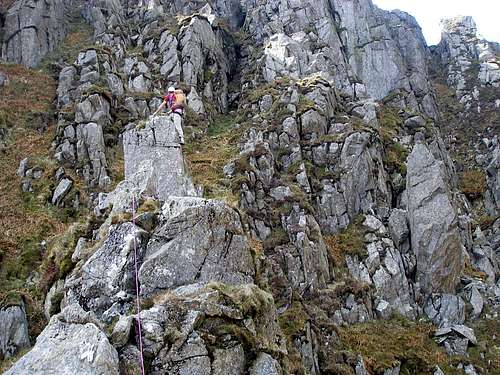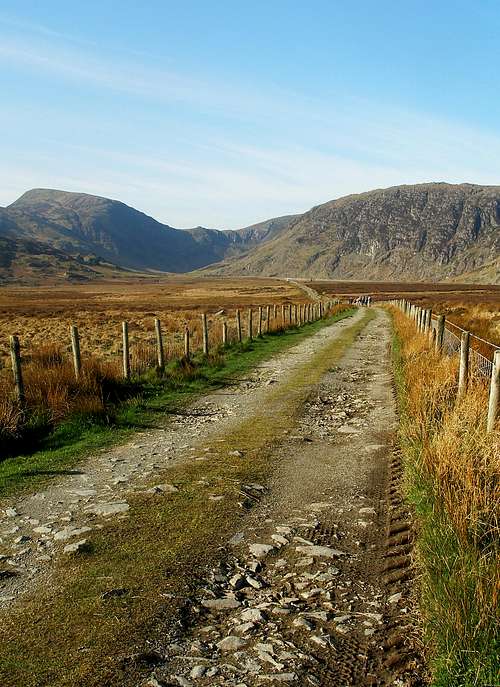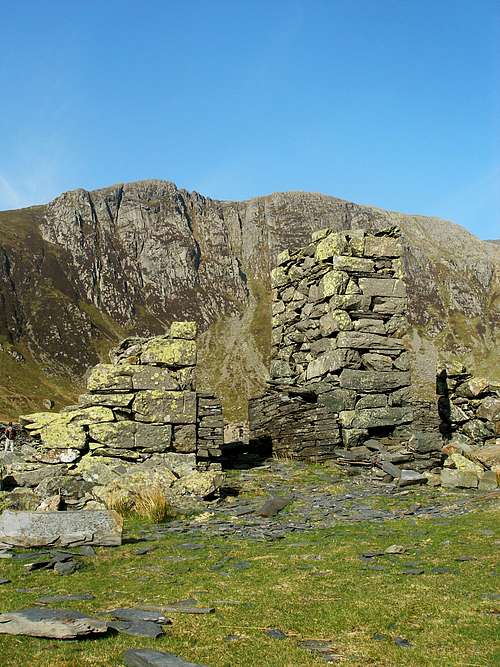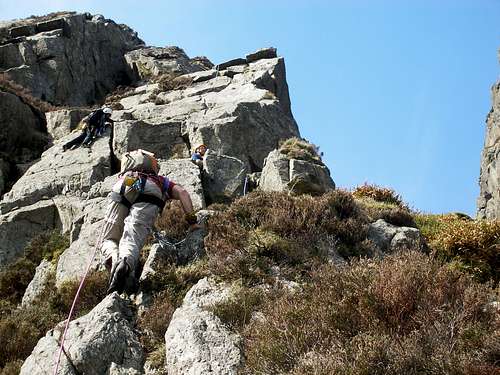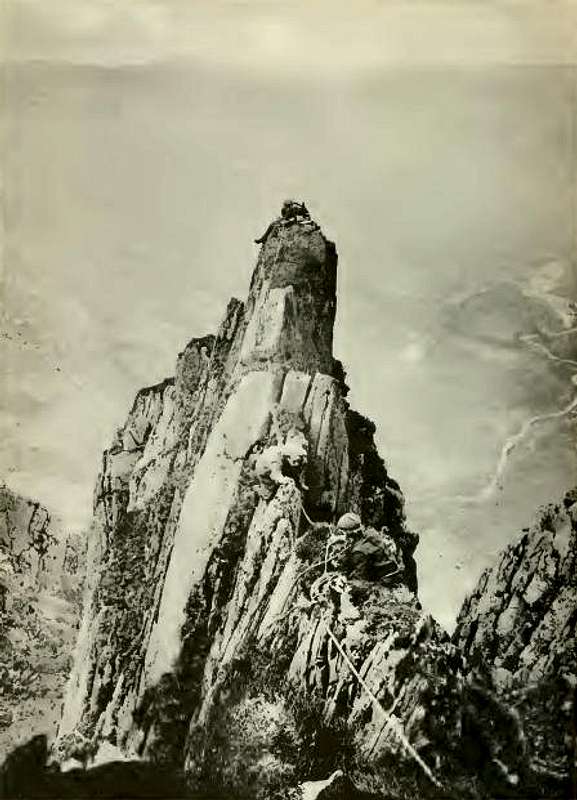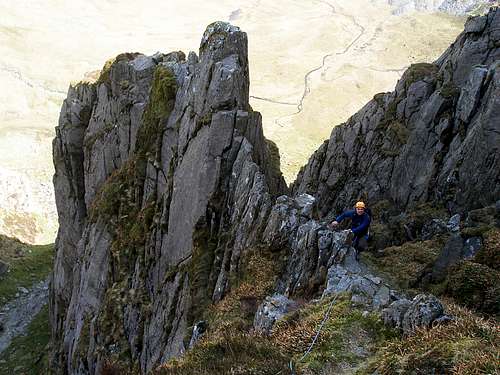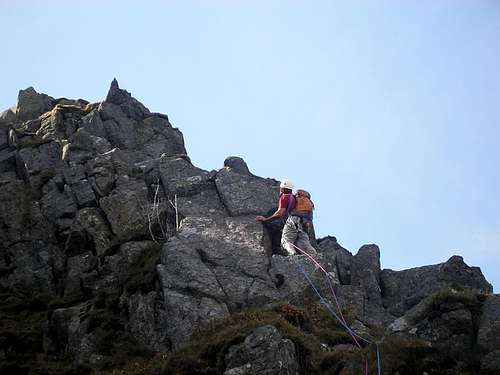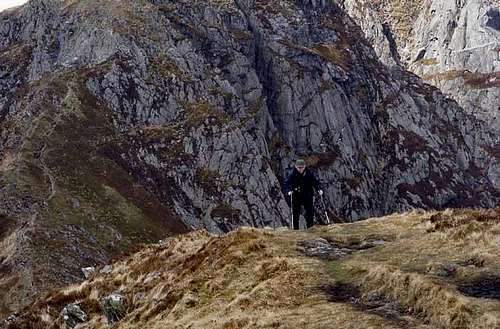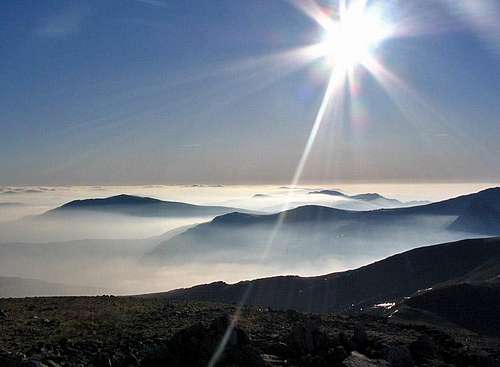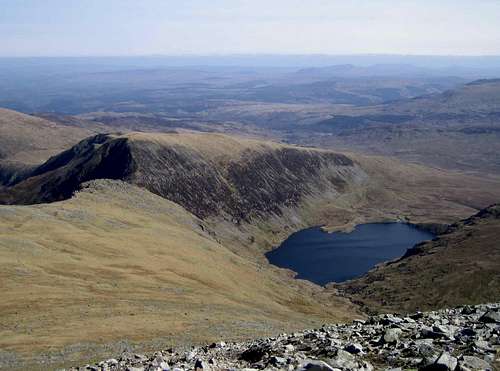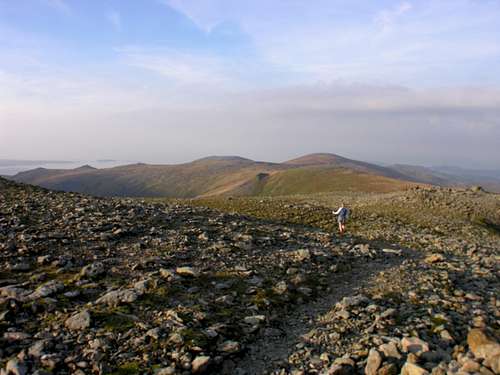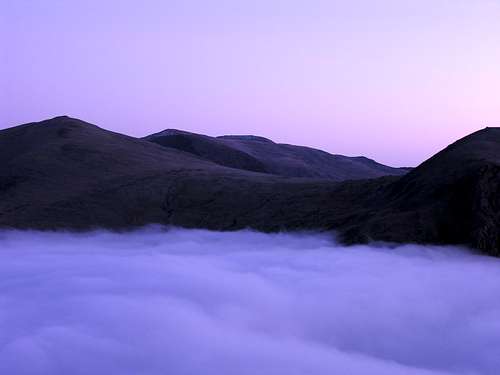|
|
Route |
|---|---|
|
|
53.15439°N / 3.95626°W |
|
|
Trad Climbing |
|
|
Spring, Summer, Fall |
|
|
Most of a day |
|
|
Very Difficult (5.2 - 5.4 YDS) |
|
|
7 |
|
|
Overview
George Dixon Abraham, quoted in Rock Climbing in North Wales (1906)
Viewed side by side, these historic routes have a Jekyll and Hyde-esque character; for while the former takes a dark, damp and dirty line up what might as well be the inside of the cliff, the latter glides up an open, airy buttress with stunning views and varied climbing. Furthermore, thanks to Craig yr Ysfa’s easterly aspect, Amphitheatre Buttress basks in the morning sun, making an otherwise unnecessary Alpine start an unusually attractive proposition. For those who know the routes, the fact that it is Great Gully and not Amphitheatre Buttress that makes it into Ken Wilson’s prestigious Classic Rock is a bizarre proclamation. Amphitheatre Buttress’ Alpine analogy may be further prolonged, because with a length of 300m, usually done in around 10 pitches, this is a mountaineering route of adventurous proportions. The climbing is always pleasant, never desperate but is marred ever so slightly by some easy scrambling in its mid-section, which isn’t to say that the scrambling isn’t good, just that a more coherent and sustained level of difficulty would be better. The route’s tricky sections are however excellent and throw the climber over exposed walls and through prominent gendarmes. It's an altogether superb outing and should be on the wishlist of all aspiring V. Diff climbers. First Ascent: G.D. Abraham, A.P. Abraham, D. Leighton and J.W. Puttrell (May 1905). |
Getting There
|
Craig yr Ysfa (SH 693 637) is located in the north eastern side of Carnedd Llywelyn’s (SH 683 643) Penywaun Wen ridge, just to the north of Bwlch Eryl Farchog, the saddle that separates the mountain from Pen yr Helgi Du (SH 698 630). There are two ways in which the crag can be approached, a long gradual walk or a shorter steeper walk. Your choice will probably depend on where you happen to be traveling from or staying, as the driving distance between the two starts is some 26km, over a mixture of main and minor roads. The steep southern approach starts in the Cwm Ogwen side of the Carneddau. Parking is available at the Gwern Gof Isaf campsite (SH 685 603), which is located just off the main A5 road and therefore is easy to reach from places like Capel Curig and Bethesda. There is a small fee to pay for this privilege, which is done at the farmhouse on the site itself. From the campsite, turn right and walk down the main road in an easterly direction. After some 300m you will come to the access track for the Ffynnon Llugwy Reservoir, which joins the A5 on its northern side (SH 687 602). If you have not done so already, cross the road and take track, which rises in a more or less continual and straight line up the hillside. After about 2.5km, the track ends and a smaller path heads of north around the eastern side of the reservoir (SH 695 623). Take this path, which rises gradually at first, later steepening significantly, before joining the other paths on Bwlch Eryl Farchog (SH 694 633). It's from here that you will get your first glimpse of Craig yr Ysfa, which is just to the north. From here descend steeply down a small path into Cwm Eigiau and traverse along the base of the crag until you reach the start of the route, which can be identified by it's position just left of the huge gully known as The Amphitheater, from which the Buttress takes its name. The more gradual and longer route begins from a small parking area at the end of a minor road in Cwm Eigiau (SH 731 633). This road is accessed via the County road of the B5106 in Tal-y-Bont. This start is the quickest choice if you are traveling to Snowdonia via the A55. It is the less strenuous option and takes you through one of the less visited parts of the National Park. Leave the carpark and walk along the track which leads in a south-westerly direction towards Llyn Eigiau. The lake was once dammed as a reservoir, but was the of a disaster when on 2nd November 1925 the dam burst. The water flowed down to Coedty Reservoir, also causing that to burst, and millions of gallons of water flowed down into the village of Dolgarrog, causing the loss of 17 lives. The ruins of the dam and the remains of the breach can still be seen today. The path follows the edge of the dam, which once passed Hafod-y-rhiw (SH 723 646) gradually becomes smaller, and in places, boggier. Continue along the track, crossing the Afon Eigiau (SH 718 640), until you reach the ruins associated old quarry workings on the northern flank of Pen yr Helgi Du (SH 702 636). The crags of Craig yr Ysfa now rear up in front of you and can be approached directly over open ground. As previously mentioned, the start of the route can be identified by it's position just left of a huge gully. |
Route Description
| The route starts at the base of a broad rib just left of the huge gully known as The Amphitheater. The pitches described are somewhat arbitrary as it is most likely that you will choose your own belays. Most will do it in ten or eleven. I have therefore opted not to show them on the topo below. |
Descent The descent is initially the same regardless of the approach you took, as you will walk off down the Penywaun-wen ridge to Bwlch Eryl Farchog. If you approached from the south you may now return along the same path as you walked in on, while if you came from the north, you will now need to descend steeply down the northern side of the saddle into Cwm Eigiau and back towards the old quarry buildings that you passed on the way up. |
Essential Gear
| The route is ten pitches long and takes a variety of gear from small to large wires, hexes and a variety of cams. Double ropes would prove useful in avoiding rope drag although a single rope would probably do. If climbing with a single rope just be sure you're packing a few extra slings as you will need to extend your runners |
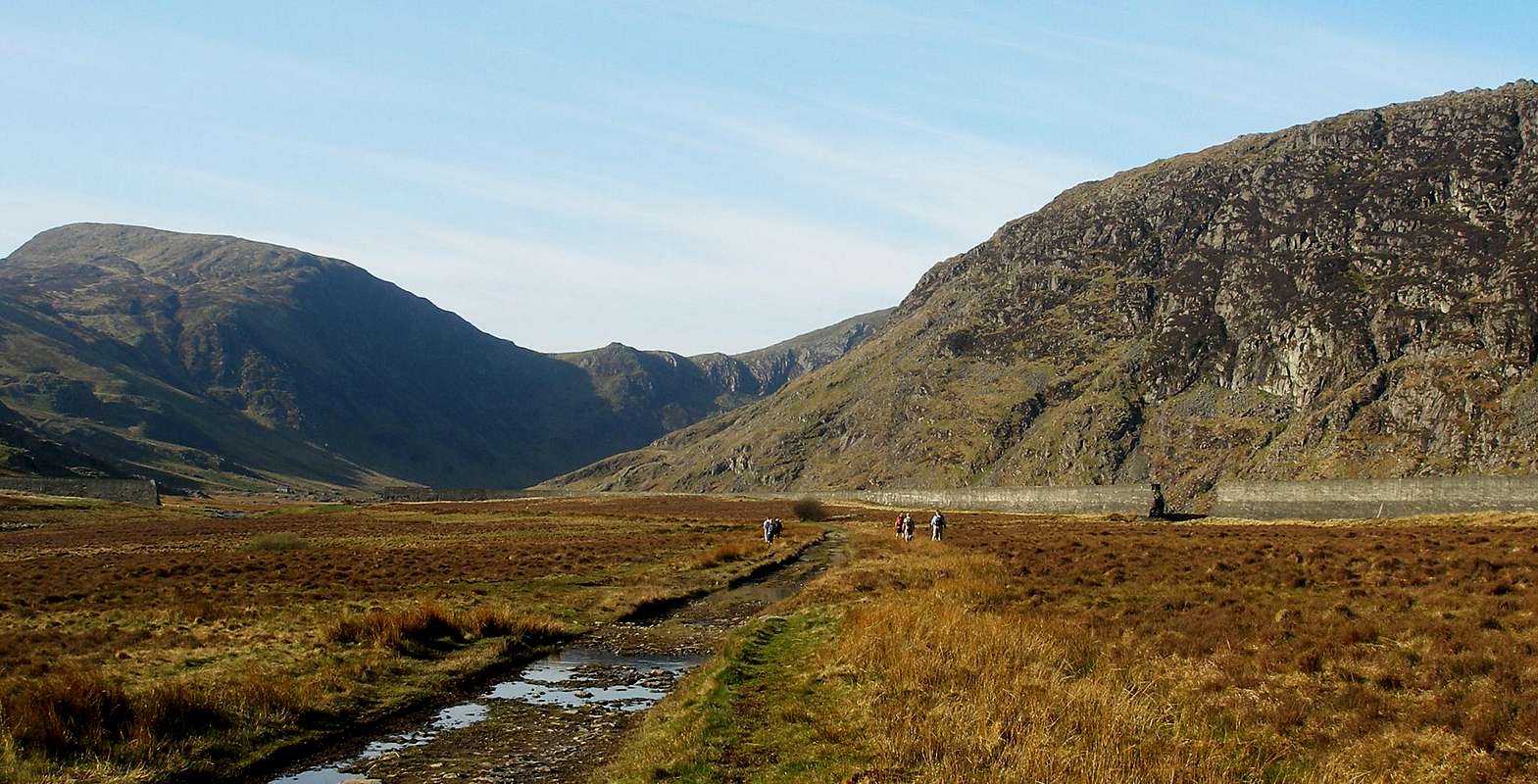 |
| Cwm Eigiau and the Llyn Eigiau Dam (Photo by Nanuls) |
Maps
Guidebooks
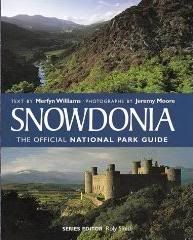 | Snowdonia (Official National Park Guide) by Merfyn Williams with contributions from Ian Mercer and Jeremy Moore A handy book full of useful information and interesting facts about the National Park. |  | Scrambles and Easy Climbs in Snowdonia by John Sparks, Tom Hutton and Jerry Rawson An excellent book describing many of Snowdonia's classic routes - the perfect bridge between scrambling and rock climbing. |
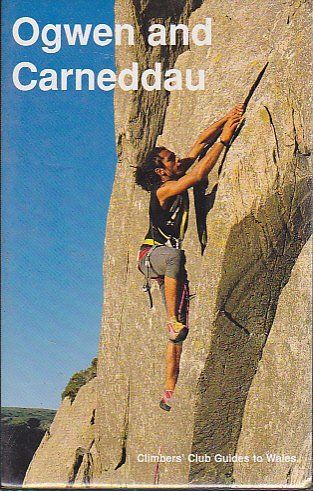 | Climbers' Club Guides to Wales: Ogwen and Carneddau by Iwan Arfon Jones With Ogwen the subject of its own book in 2010 this guide is now out of print. However, the Carneddau section is available as a free download from the Climbers' Club website. |  | Cicerone Guide: Ridges of England, Wales and Ireland by Dan Bailey A new and very pretty guide to some of the UK's finest ridge routes, including this one which is the subject of its cover photo. |
 | Ground Up Guide: North Wales Rock by Simon Panton A superb, lavishly presented general guidebook to the best North Wales has to offer. Read, gawp and drool! |  | Rockfax Guide: North Wales Climbs by Mark Reeves, Jack Geldard and Mark Glaister A superb, stylishly presented, if a littly bulky selected guide to North Wales' best rock climbs. |
 | Rock Climbing in Snowdonia by Paul Williams A slightly dated, but nevertheless still relevant guide to climbing in North Wales. Not quite as good as the previous book though. |  | Rockfax Guide: North Wales Classics by Jack Geldard A short and succinct selected guide to the best Snowdonia has to offer. Small and light, it'll fit in your shirt pocket! |
External Links
Snowdonia National Park Authority Association of National Park Authorities Royal Commission on Ancient & Historical Monuments in Wales Hiking, Climbing and Mountaineering Organisations and Companies British Mountaineering Council Plas y Brenin National Mountain Centre Weather Tourist Information North Wales Tourism Partnership Local Information from Gwynedd.com Local Information from Snowdonia Wales Net Travel Welsh Public Transport Information Accommodation Youth Hostel Association in Wales Maps and Guidebooks Cordee Travel and Adventure Sports Bookshop Wildlife and Conservation |



